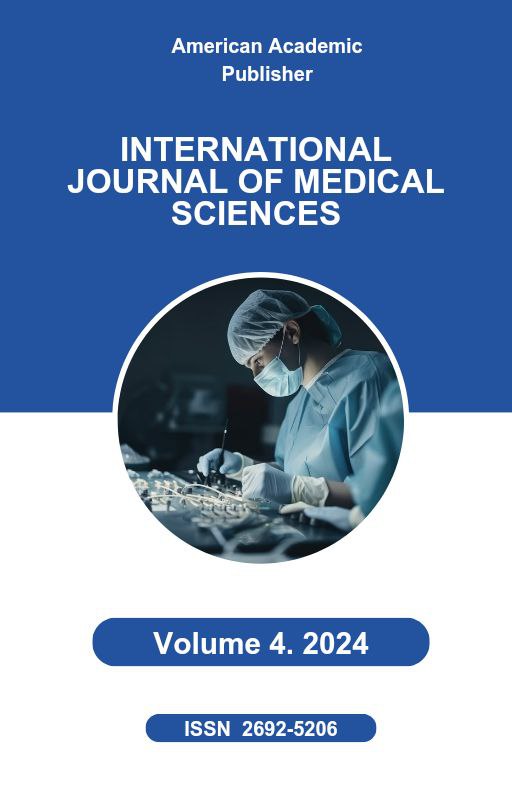 Articles
| Open Access |
https://doi.org/10.55640/
Articles
| Open Access |
https://doi.org/10.55640/
PREVALENCE AND CONTROL METHODS OF ANTIBIOTIC-RESISTANT BACTERIA IN THE ANDIJAN REGION
Khodjimatova Go'zal Marifjonovna , Department of Infectious diseases, Andijan state medical instituteAbstract
Background: Antimicrobial resistance (AMR) is a significant global public health threat, leading to increased morbidity, mortality, and healthcare costs. Regional data is crucial for developing targeted intervention strategies. This study aimed to investigate the prevalence of antibiotic-resistant bacteria and assess existing control mechanisms in healthcare facilities within the Andijan region of Uzbekistan. Methods: A cross-sectional study was conducted from January 2024 to August 2025 across five major multi-disciplinary hospitals in the Andijan region. A total of 650 clinical isolates were collected from various samples, including blood, urine, respiratory secretions, and wound swabs. Bacterial identification was performed using standard microbiological techniques and MALDI-TOF MS. Antimicrobial susceptibility testing (AST) was carried out using the Kirby-Bauer disk diffusion method, following the Clinical and Laboratory Standards Institute (CLSI) guidelines. Data on infection control policies and antibiotic stewardship programs were collected through structured questionnaires and interviews with healthcare personnel. Results: The most frequently isolated bacteria were Escherichia coli (31%), Staphylococcus aureus (24%), Klebsiella pneumoniae (18%), and Pseudomonas aeruginosa (11%). High resistance rates were observed among Gram-negative isolates to commonly prescribed antibiotics. E. coli showed significant resistance to ampicillin (>75%) and ciprofloxacin (>60%). Over 40% of K. pneumoniae isolates were resistant to third-generation cephalosporins, and 15% demonstrated carbapenem resistance. Among S. aureus isolates, 35% were identified as Methicillin-resistant Staphylococcus aureus (MRSA). Analysis of control measures revealed that while basic infection prevention protocols were in place, adherence was inconsistent, and dedicated antimicrobial stewardship programs were largely absent. Conclusion: The prevalence of multidrug-resistant bacteria, particularly carbapenem-resistant Enterobacteriaceae and MRSA, is a serious concern in the Andijan region. The findings underscore an urgent need for strengthening AMR surveillance, implementing robust antimicrobial stewardship programs, and enhancing infection prevention and control practices in healthcare settings across the region to mitigate the spread of resistant pathogens.
Keywords
Antimicrobial resistance, Andijan, Uzbekistan, E. coli, MRSA, Carbapenem resistance, Infection control, Antimicrobial stewardship.
References
Belkina, T., Al-Ghamdi, S., Al-Wazzah, M., Jamal, A., Al-Amri, A., & Binsalih, S. (2014). Antibiotic use and knowledge in the community of Yemen, Saudi Arabia, and Uzbekistan. Journal of Infection and Drug Resistance, 7, 17–25.
Central Asian and European Surveillance of Antimicrobial Resistance (CAESAR) network. (2019). Antimicrobial resistance in the WHO European Region and beyond. WHO Regional Office for Europe.
Falagas, M. E., Tansarli, G. S., Karageorgopoulos, D. E., & Vardakas, K. Z. (2014). Deaths attributable to carbapenem-resistant Enterobacteriaceae infections. Emerging Infectious Diseases, 20(7), 1170–1175.
Kadirova, D. A., Khaydarova, D. K., & Ibragimova, N. S. (2021). The prevalence of methicillin-resistant staphylococcus aureus in Uzbekistan. European Journal of Molecular & Clinical Medicine, 8(3), 1345-1351.
Laxminarayan, R., Duse, A., Wattal, C., Zaidi, A. K. M., Wertheim, H. F. L., Sumpradit, N., ... & Cars, O. (2013). Antibiotic resistance—the need for global solutions. The Lancet Infectious Diseases, 13(12), 1057–1098.
Lee, A. S., de Lencastre, H., Garau, J., Kluytmans, J., Malhotra-Kumar, S., Peschel, A., & Harbarth, S. (2018). Methicillin-resistant Staphylococcus aureus. Nature Reviews Disease Primers, 4(1), 18033.
Logan, L. K., & Weinstein, R. A. (2017). The epidemiology of carbapenem-resistant Enterobacteriaceae: the impact and evolution of a global menace. Journal of Clinical Microbiology, 55(3), 680-692.
O'Neill, J. (2016). Tackling drug-resistant infections globally: Final report and recommendations. The Review on Antimicrobial Resistance. HM Government and Wellcome Trust.
Parpieva, N. N., Alimova, Z. U., & Giyasov, Z. A. (2019). The Spread of ESBL-Producing Strains of Enterobacteria in Uzbekistan. American Journal of Medicine and Medical Sciences, 9(3), 112-116.
World Health Organization. (2021). Antimicrobial resistance. Retrieved from https://www.who.int/news-room/fact-sheets/detail/antimicrobial-resistance
World Health Organization. (2022). Global Antimicrobial Resistance and Use Surveillance System (GLASS) report: 2022. WHO.
Article Statistics
Downloads
Copyright License

This work is licensed under a Creative Commons Attribution 4.0 International License.

